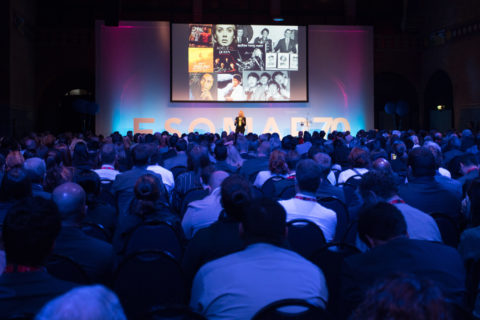By Sarah DeCaux
This is the third and final part of our series on the changing nature of communication. We’ve previously explored the way in which communication is increasingly silent and visual. Here we explore organic data and how we interpret and make sense of it.
We hope this series will inspire you to join us at ESOMAR Fusion in November, where I’m leading a Masterclass on this topic.
Act 3: How can we best leverage user generated data… and should we even try?
There’s a huge amount of UGC (user generated content) out there about brands, products, product categories, hobbies, habits and behaviours. There will be relatively few occasions we’re researching something which can’t be researched online first, particularly in terms of natural, organic conversation.
But so often – and perhaps for good practical reasons – we overlook this. Personally, I’ve found huge value in just ‘Googling’ the products and services we’ve had a brief about, revealing rich insights via Twitter, public Facebook pages or online forums like Mumsnet. It can offer immediate insight and challenges we may not have thought about otherwise, can highlight strength of feeling and emphasise low engagement.
Some researchers are clear that this rich stream of insight is too precious not to be mined. As Nick Gadsby put it in his 2015 article for the MRS:
“As consumer language simplifies and words succumb to abbreviation, there is an urgent need to start devoting more of our time to analysing and understanding the rich visual material consumers produce, and we must adopt formal methods for doing so.”[i]
We share this view and have invested in social intelligence/social listening. We will be talking at Fusion about how we’ve partnered with GSK on this, and the impact (and challenges) involved. There’s a question about whether this approach can work in isolation but we’re finding it can reap dividends amongst a triangulation of methodologies – helping us move beyond what people tell us and into what is implicit and less rationalised.
But really exploring this organic data poses a huge challenge for qualitative researchers.
The Role of Cultural Analysis
Alongside social listening, we are also finding that semiotics has a crucial role to play in maximising the opportunity and understanding of user generated content and using this to help solve commercial challenges.
It’s often stated that 90% of communication is non-verbal. Semiotics is the 90%[ii] helping us move beyond what people say to understand the context and culture influencing communication. It’s helping us make sense of user generated data and tap into this vast resource. Again, it’s a tool we’re using in combination with other (often primary) research approaches.
Commercial semiotics is growing and industry experts have predicted that quantitative semiotics will follow. This has the potential to speed up data collection and analysis (by using organic data), reduce costs and overcome the subjective nature of semiotics by pairing it with logic and vast data sets.
However, there remains scepticism around quantitative semiotics. While a machine can help with data collection, it can’t replace human interpretation and the skill it takes to synthesise insights from a semiotic analysis – which must be positive news for qual researchers? In her LinkedIn article 10 reasons why you can do semiotics and a machine can’t, consumer psychologist Rachel Lawes writes:
‘Semiotic analysis requires much more than mechanically sorting images and assigning abstract meanings to them or their component parts’.[iii]
Challenges for Qualitative Research
So to finish, for qualitative researchers this UGC poses practical and theoretical challenges. To pick just a few:
How representative is this data?
There are large swathes of the population who are key decision makers driving purchasing behaviour and interaction with brands but who may not post about these brands (or possibly even themselves) publicly online. Much of the growth we see is in platforms that facilitate dark social interaction or private messaging services, rather than broadcast.
How do we analyse the presence of absence?
How do we make sense of the categories or brands people don’t talk about? What’s the implication and meaning behind this?
There are lots of tools and techniques, including software solutions, for exploring what’s organically posted online. As we discussed, more semiotics may be on the horizon, and it’s likely the growth in AI will help shortcut and improve our ability to collate this data further. But is making sense of this data aligned with the skills and frameworks we use in qualitative research? And does this triangulate with what we as researchers enjoy and are enthused about in doing our jobs?
In this series, I’ve discussed the changing nature of conversation and the implications for qualitative research. We look forward to a lively and thought-provoking workshop in November. If you haven’t signed up yet, please do!
Sarah De Caux, Head of Spirit, Join the Dots
[i] https://www.research-live.com/article/features/the-new-visual-language-of-consumers/id/5022622
[ii] https://signoi.com/2018/07/25/signoi-semiotic-seminar-18-09-18/
[iii] https://www.linkedin.com/pulse/10-reasons-why-you-can-do-semiotics-machine-cant-dr-rachel-lawes/



1 comment
The social interaction per different platforms is really amazing. Nowadays you even do not need to sit at the computer in order to find people. Different software like Octopus is able to do it for you. You have to define the main aspects and the tool will interact with people, view profiles and establish contacts. It’s charming and scaring.